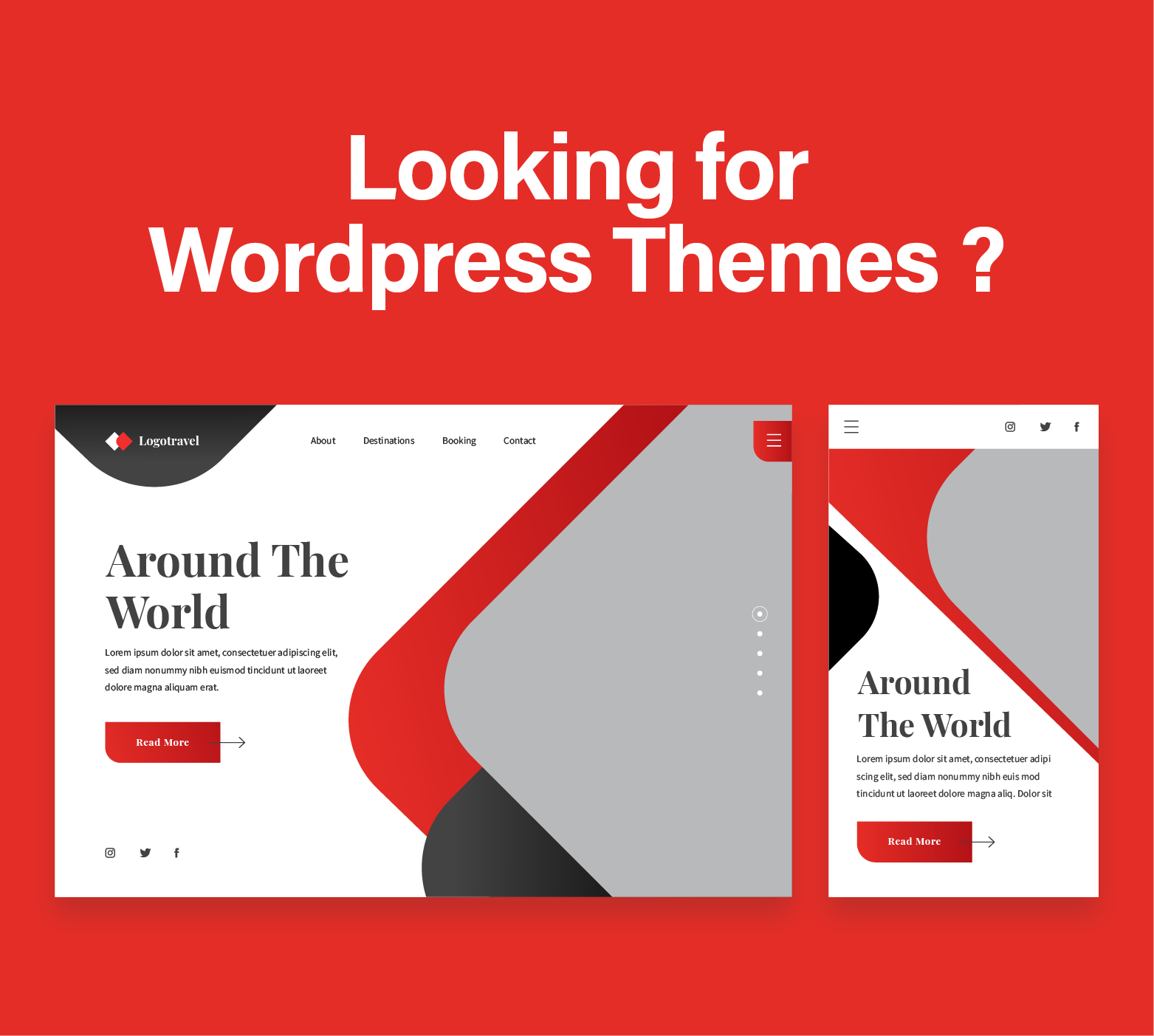In this article we are trying to show you the best website design tips for small business so you can take the best decisions when building your website. And because small businesses are the heart of the economy in any country in the world, we really think this article would help a lot of business owners and entrepreneurs.
If you are an entrepreneur and want to build a website, then you need web design services for small business. We can definitely offer one of the best services out there and of course with good pricing. Because we have over 13 years of experience , we know we can tackle anything. So check our web design packages today.

Introduction
In today’s digital age, a compelling online presence is indispensable for small businesses. An effectively designed website serves as the heart of your brand’s digital footprint, attracting visitors and converting them into loyal customers. As a leading web design and SEO agency, we understand the nuances that make a website not just visually appealing but also optimized for search engines. This article unveils 10 essential website design tips to elevate your small business in the competitive online marketplace.
Do you need affordable web design for small businesses ? No problem, we have a dedicated team to help you through the whole process. Contact us and hire an off-shore website development team.
And because all these things take a degree of cost, it all adds up, so its better to know right from the start what is the average cost for a small business website and decide what you want to implement.
1. Keep Your Design Simple and User-Friendly
A cluttered website can overwhelm visitors and detract from your message. By keeping your design clean and straightforward, you ensure that visitors can easily find what they’re looking for, enhancing user experience and engagement. A simple design also facilitates faster loading times, contributing to better SEO rankings.
1.1. Embrace Minimalism
Minimalism in modern web design emphasizes the ‘less is more’ philosophy, focusing on essential elements and content clarity. This approach not only makes your website aesthetically pleasing but also improves functionality, making navigation intuitive for all users. By prioritizing minimalism, you highlight your services more effectively, ensuring that potential clients understand your offerings at a glance.
Implementing a minimalist design requires careful consideration of color schemes, typography, and whitespace. These elements, when harmoniously balanced, create a serene and inviting digital environment that encourages visitors to stay longer and explore. As a web design agency, leveraging minimalism can set you apart in the cluttered digital landscape, showcasing your expertise in creating user-centric websites.
1.2. Ensure Easy Navigation
Navigation is the cornerstone of usability. A well-structured navigation menu guides visitors through your website, leading them to the information they seek effortlessly. It’s crucial to organize your site’s hierarchy logically, with clear labels for each section. This clarity not only enhances the user experience but also aids search engines in indexing your content, boosting your SEO efforts.
Consider employing sticky headers or a hamburger menu for mobile versions to keep navigation accessible at all times. Dropdown menus can further streamline navigation, making your website more user-friendly. As an SEO agency, understanding and implementing these navigation best practices can significantly impact your website’s performance and rankings.
2. Optimize for Mobile Devices
With the increasing prevalence of smartphones, mobile optimization is no longer optional. A mobile-friendly website adapts to various screen sizes, ensuring that content is readable and accessible on any device. This adaptability not only improves user experience but also positively affects your SEO rankings, as search engines prioritize mobile-optimized sites in their results.
2.1. Implement Responsive Design
Responsive web design ensures that your site’s layout and content adjust seamlessly across different devices. This flexibility enhances the user experience, keeping your website functional and attractive on desktops, tablets, and smartphones alike. As a web design and SEO agency, adopting responsive design is a testament to your commitment to providing value to your clients, ensuring their websites cater to a broad audience.
Utilizing CSS media queries, flexible grid layouts, and adaptable images, you can create a website that looks and performs excellently on any device. This technical prowess not only satisfies users but also aligns with search engines’ mobile-first indexing, further enhancing your SEO strategy.
2.2. Improve Mobile Load Times
Speed is a critical factor in keeping mobile users engaged. Optimizing images, leveraging browser caching, and minimizing code are effective strategies to accelerate load times. Faster-loading pages reduce bounce rates and encourage users to explore more of your site, positively influencing your SEO metrics.
Tools like Google’s PageSpeed Insights provide valuable insights into your website’s performance on mobile devices, offering actionable recommendations for improvement. As experts in web design and SEO, continuously optimizing for speed demonstrates your dedication to delivering superior user experiences and achieving top search engine rankings.
3. Focus on Content Quality
High-quality, engaging content is fundamental to keeping your audience interested and encouraging them to interact with your brand. It’s not just about what you say but how you say it. Content that is informative, relevant, and compelling can set your small business apart in a saturated market. For SEO, content quality directly influences your website’s ranking on search engine results pages (SERPs).
3.1. Prioritize Readability
Readability is key to ensuring that your audience can easily digest your content. Use headings, subheadings, bullet points, and short paragraphs to break up text and aid in scanning. Selecting the right font size and type can also significantly impact readability. As a web design agency, emphasizing readability in your designs will enhance the overall user experience, encouraging longer site visits and interaction with your content.
Moreover, readability affects your SEO. Search engines favor content that’s easily accessible and understandable to users. Implementing these strategies not only benefits your visitors but also improves your site’s search engine ranking, driving more organic traffic to your site.
3.2. Create Engaging Content
Engaging content captivates your audience, providing them with value that encourages sharing and return visits. Stories, case studies, how-to guides, and informative articles related to your industry can all contribute to a rich, engaging user experience. As an SEO agency, producing content that resonates with your target audience can enhance your online visibility and authority.
Utilizing keywords strategically within your content can also improve your SEO performance. However, it’s important to maintain a natural flow, ensuring that keywords enhance rather than detract from the quality and readability of your content. This balance is crucial for keeping both your audience engaged and search engines satisfied.
4. Use High-Quality Images
Images play a crucial role in website design, breaking up text and providing visual interest that engages visitors. High-quality, relevant images can convey your message instantly, making a strong impression on your audience. For SEO, optimizing image file sizes and using descriptive alt tags can improve your website’s loading speed and accessibility, further enhancing your rankings.
5. Optimize for Search Engines
SEO is integral to the success of any website, especially for small businesses looking to increase their online visibility. Implementing SEO best practices ensures that your site is discoverable by search engines, driving targeted traffic to your website. From keyword research to on-page optimization and quality backlinks, every aspect of your site’s design can contribute to its SEO performance.
5.1. Utilize SEO Best Practices
Adhering to SEO best practices involves optimizing title tags, meta descriptions, and headers to include relevant keywords. This not only helps search engines understand your website better but also increases the likelihood of your content ranking higher in search results. As a web design and SEO agency, your expertise in seamlessly integrating SEO into website design is a valuable asset to your clients.
Regularly updating your website with fresh, relevant content also signals to search engines that your site is active, further improving your SEO performance. Incorporating internal linking within your content can enhance user experience and help search engines crawl your site more effectively.
5.2. Focus on Local SEO
For small businesses, local SEO is particularly important. Optimizing your website for local search involves including location-based keywords, creating a Google My Business account, and encouraging customer reviews. These strategies can dramatically increase your visibility in local search results, attracting more customers from your community.
Additionally, local SEO helps to build your online reputation and credibility, making it easier for potential customers to find and trust your business. As an agency specializing in web design and SEO, providing local SEO solutions can significantly impact your clients’ success in their respective markets.
6. Implement Calls to Action
Effective calls to action (CTAs) guide your visitors towards your business goals, whether that’s making a purchase, signing up for a newsletter, or contacting you for more information. CTAs that are clear, compelling, and visually distinct stand out on your website, driving conversion rates and engaging your audience directly.
As a web design and SEO agency, crafting CTAs that blend seamlessly with the design while popping out is an art. Using action-oriented language, creating a sense of urgency, and placing CTAs strategically within your website’s layout are critical for maximizing their impact. Analyzing CTA performance regularly can also provide insights into user behavior, allowing for data-driven optimizations.
7. Ensure Fast Loading Times
Website speed is a critical factor in user satisfaction and SEO. Sites that load quickly reduce bounce rates and encourage users to explore more deeply, positively impacting engagement and conversion rates. Moreover, search engines prioritize fast-loading websites in their rankings, recognizing speed as an indicator of a quality user experience.
Techniques for improving site speed include optimizing image sizes, minimizing the use of heavy scripts, and leveraging caching. As experts in web design, it’s crucial to prioritize performance from the outset, ensuring that your clients’ websites are not only beautiful but also blazingly fast. This commitment to speed reflects your agency’s dedication to excellence in both design and user experience.
8. Embrace Social Proof
Social proof, such as customer testimonials, reviews, and social media mentions, builds trust and credibility. Displaying these elements prominently on a website can significantly influence potential customers, showing them that your business is respected and valued by others.
Incorporating social proof requires more than just adding a few quotes to your website; it involves strategic placement and integration to ensure these elements support your overall messaging and goals. As a web design and SEO agency, guiding your clients in collecting and displaying social proof can enhance their site’s effectiveness and conversion potential.
9. Regularly Update Your Site
An updated website reflects a dynamic, active business. Regular updates with fresh content, new products or services, and the latest news keep your audience engaged and coming back for more. This practice not only benefits user engagement but also SEO, as search engines favor websites with new, relevant content.
Establishing a content calendar, leveraging blogging, and updating your portfolios or case studies are ways to keep your site fresh. This strategy demonstrates your agency’s commitment to staying current and relevant, showcasing your continuous effort to deliver value to your clients and their audiences.
10. Monitor and Analyze Your Site’s Performance
Continuous improvement is key to maintaining a successful online presence. Utilizing tools like Google Analytics allows you to monitor your website’s performance, understand user behavior, and identify areas for improvement. This data-driven approach ensures that your website remains optimized for both user experience and search engine rankings.
Regularly reviewing analytics and adjusting your strategy based on insights can lead to significant improvements in your website’s effectiveness. As a web design and SEO agency, offering ongoing analysis and optimization services can add immense value to your clients, ensuring their websites continue to evolve and succeed in a competitive digital landscape.
Bonus Tip: Integrating SEO and Web Design for Maximum Impact
The synergy between SEO and web design is undeniable. When these two disciplines operate in harmony, they create websites that are not only visually appealing but also rank well in search engine results. As a web design and SEO agency, mastering the integration of SEO principles into your design process is key to delivering websites that serve your clients’ business goals effectively.
SEO-friendly web design goes beyond keyword optimization. It encompasses site structure, mobile responsiveness, user experience (UX), and technical elements like site speed and schema markup. By considering SEO from the start of the web design process, you can build a solid foundation for your clients’ online success. This approach ensures that their sites are discoverable, engaging, and primed for conversion from day one.
Collaboration between SEO specialists and designers is crucial. Designers need to be mindful of how design choices can affect a site’s SEO, while SEO professionals should understand the importance of design in user engagement and conversion rates. This collaborative effort results in websites that not only draw in traffic but also keep visitors engaged and encourage them to take action.
Implementing a SEO strategy can be a thing you do yourself, or just hire someone and buy a SEO package and outsource to a SEO consultant easily. They know what they are doing and they can help you to move really fast.
Using WordPress as cms for better seo
Investing in tools and technologies that facilitate this integration can also provide a competitive edge. For instance, using CMS platforms that are both design and SEO-friendly, like WordPress, can streamline the process of creating websites that excel in both aesthetics and search engine visibility. Additionally, keeping abreast of the latest trends in both web design and SEO ensures that the websites you create are cutting-edge and future-proof.
Ultimately, the goal is to craft websites that tell a compelling story and provide valuable information, presented in a way that search engines can easily understand and rank. This holistic approach to web design and SEO not only enhances your agency’s service offerings but also drives tangible results for your clients, cementing their—and your own—success in the digital marketplace.
Conclusion
To stand out in today’s crowded digital marketplace, small businesses must prioritize a well-designed, responsive, and SEO-optimized website. By following these 10 essential website design tips, businesses can not only enhance their online presence but also drive growth and success. As a web design and SEO agency, your expertise in implementing these strategies positions you as a valuable partner in your clients’ journey to achieving their digital marketing goals. Remember, a successful website is an ongoing project that requires continuous attention and refinement to meet the ever-changing demands of the online world.
If you need web design services for small businesses do not hesitate to get in touch with us.
Let's talk
Schedule a discovery call with our team








